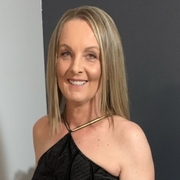
Cindy’s journey with STEMI and heart spasms
A misdiagnosis and years of unexplained symptoms
While Cindy McCall had her first heart attack at the age of 35 in 2010, her problems had started much earlier, with a misdiagnosis in her 20s.
She was told that asthma was the reason for “pain in my shoulder blades and numb, cold hands when waking from sleep”.
Other symptoms included “a grey, gaunt appearance and distended neck veins”.
At the age of 28, she started a personal training course, but her health challenges caught up with her.
“I went into supraventricular tachycardia and was successfully ablated,” she said. Her previous symptoms, however, persisted.
Heart attack and a surprising discovery during angiogram
In 2010, Cindy, then 35, had her first heart attack.
“I woke feeling not right and got myself a glass of water, then went back to bed and laid down,” she said.
“I instantly had stomach pain, then extreme chest pain that radiated up my neck and down my arm. I was sweating excessively and vomited.”
Having recently completed a course in first aid, she knew the symptoms indicated a heart attack. Taken to hospital, tests revealed she had raised troponin levels in her blood. Troponins are proteins released when the heart muscle has been damaged, as generally happens with a heart attack. The more damage there is to the heart, the greater the amount of troponin T and I there will be in the blood.
A rare STEMI without blocked arteries
It’s believed Cindy had a ST-elevation myocardial infarction (STEMI) – a type of heart attack that is more serious and has a greater risk of serious complications and death. Generally, it means at least one artery is 100 percent blocked.
But Cindy’s case was different, in that she did not and still does not have any blockages in her arteries. However, spasming of one of her arteries during an angiogram saw it close to 90%, requiring an IV glyceryl trinitrate (GTN) to relieve it.
Diagnosis with vasospastic angina
She was diagnosed with vasospastic angina (which is also known as coronary vasospasm), which occurs when a coronary artery supplying blood and oxygen to the heart goes into spasm and suddenly narrows.
The diagnosis changed her life in many ways, not least of all by spurring her to seek out a support group, take the opportunity to train as a nurse, and push for a greater recognition of the condition.
Cindy said there is scant knowledge about heart spasms in the public sphere, even though she’s met many people with a similar experience to her own. In the end it would lead her to co-found International Heart Spasms Alliance to raise money and awareness.
Recovery and finding stability
But the path hasn’t been easy, and in the meantime, she’s had many trials. At 42 she “had a further two episodes of myocardial infarction (heart attack) with non-obstructive coronary arteries (MINOCA) caused by spasm”.
Effectively, it means that, rather than any blockages in the arteries, spasms were the cause of the episodes. At the age of 45, the same thing happened again.
There have been dark times, but Cindy has always tried to remain positive.

The combination of having a supportive network, timing of medicines, cutting down work hours, reducing stress through yoga and meditation, and making sure I didn’t set off triggers - cold, stress and lack of sleep - has now helped keep me stable.
Cindy McCall
Heart attack survivor
You might also be interested...

Heart attack warning signs
Free heart attack warning signs education, action plans and videos to help you understand your heart and the warning signs to look out for.

Cardiovascular disease risk factors and heart attack warning signs in women
Information for healthcare professionals and the public on cardiovascular disease risk factors and warning signs affecting women.

Time to book a Heart Health Check?
A Heart Health Check with your GP will help you understand your risk of having a heart attack or stroke in the next 5 years and what you can do to prevent it.